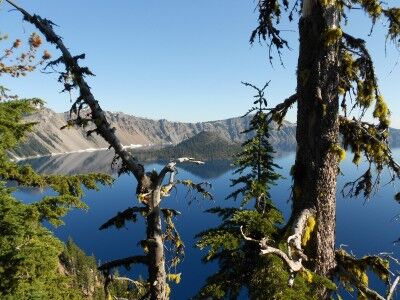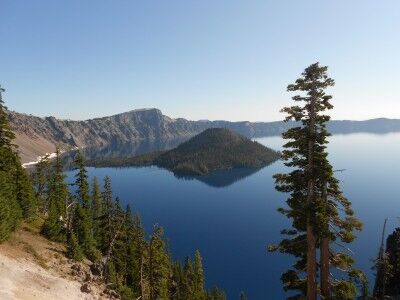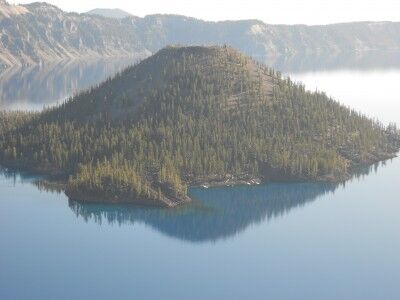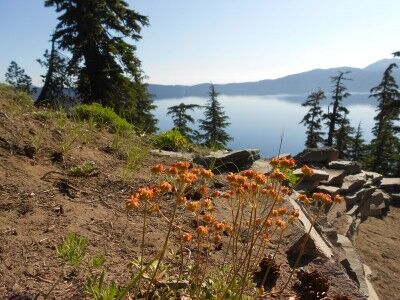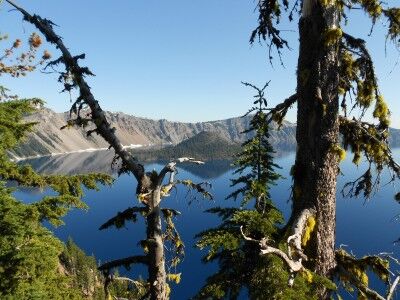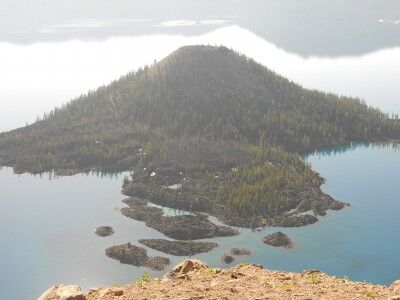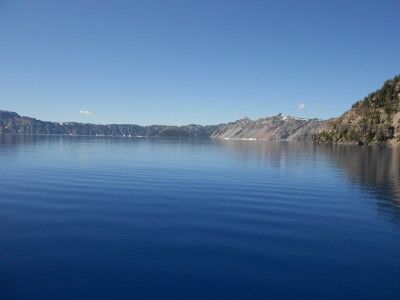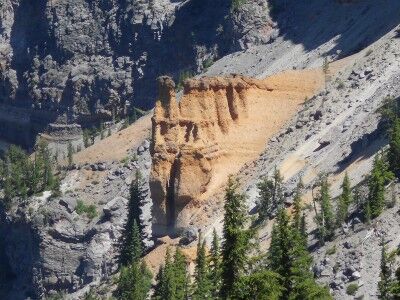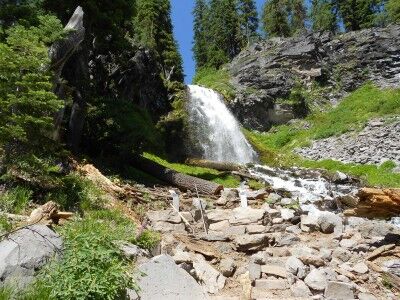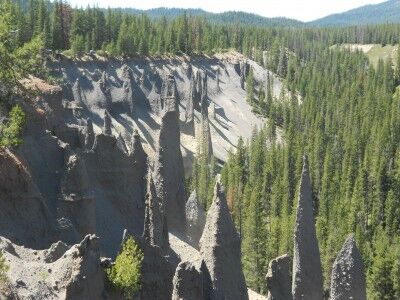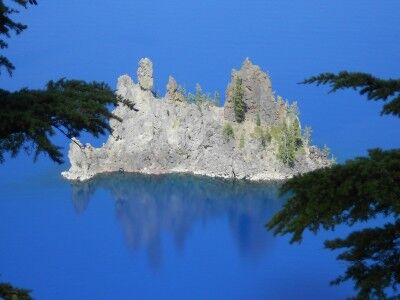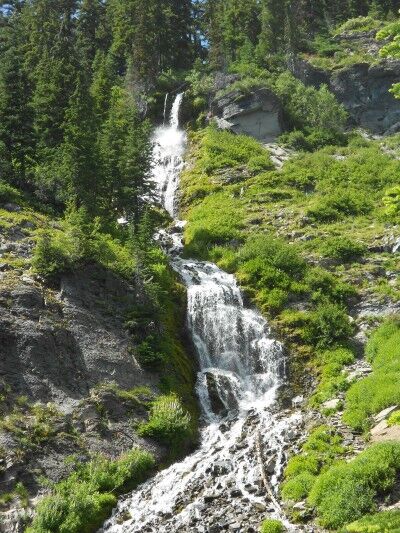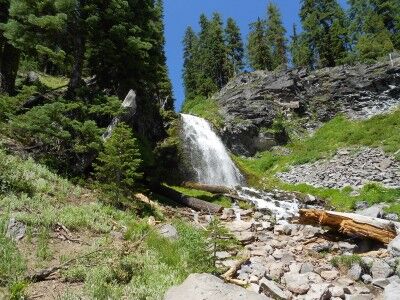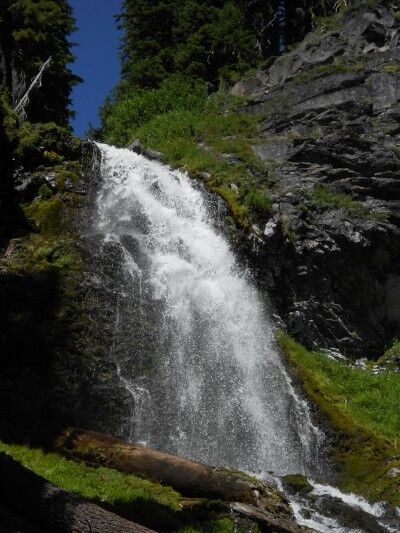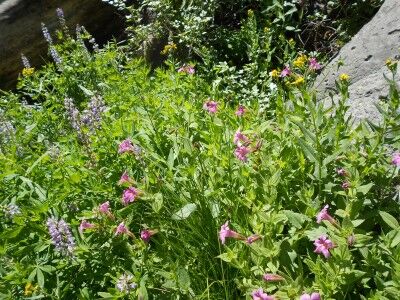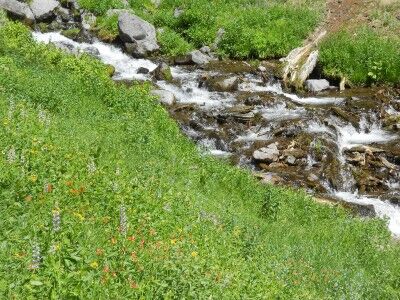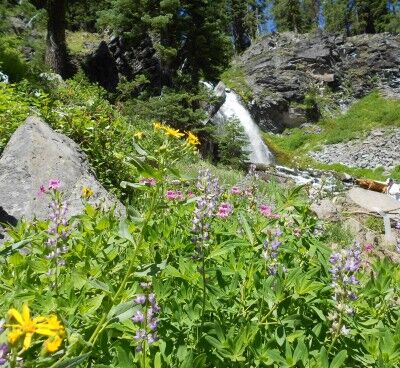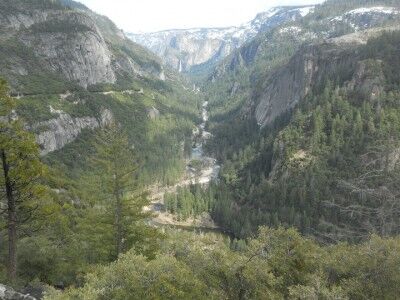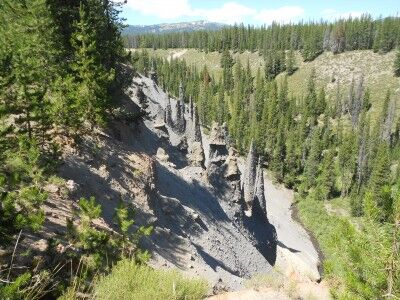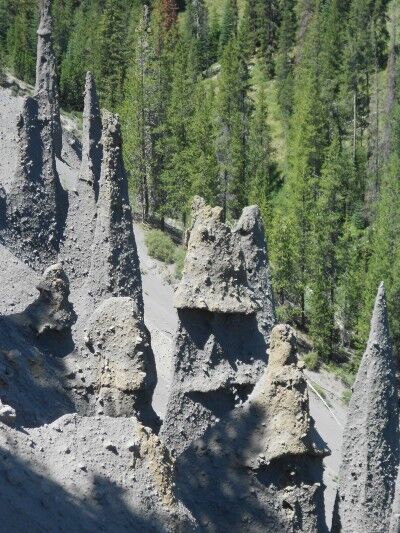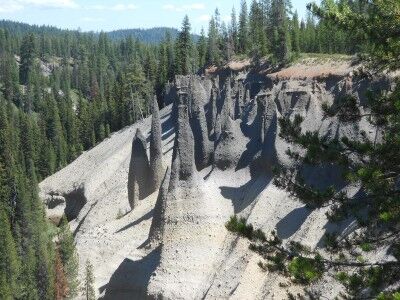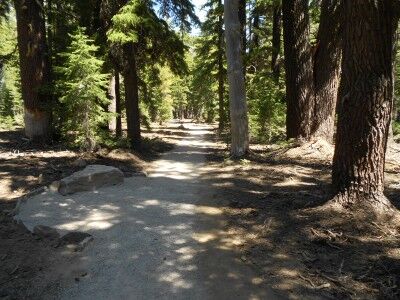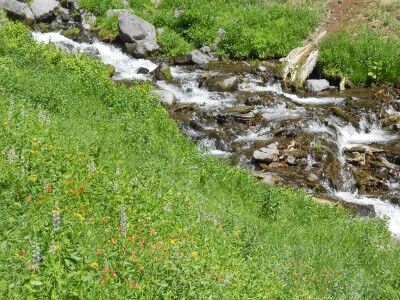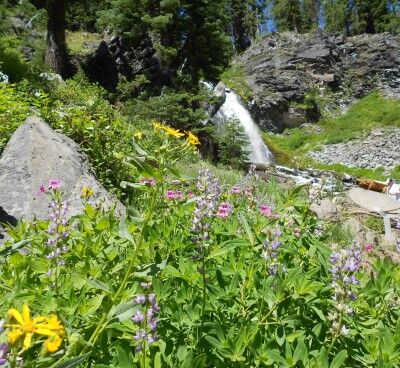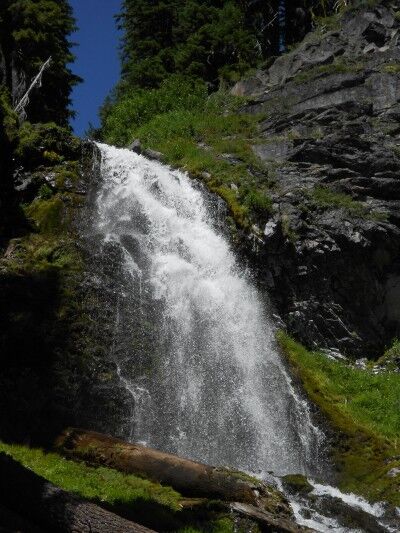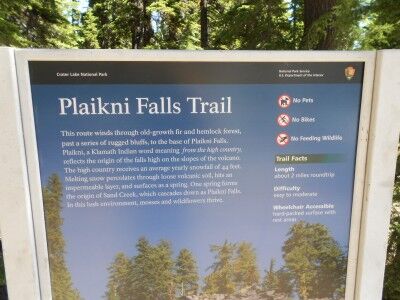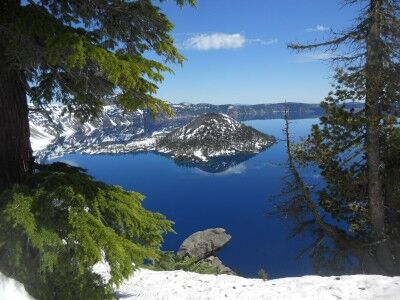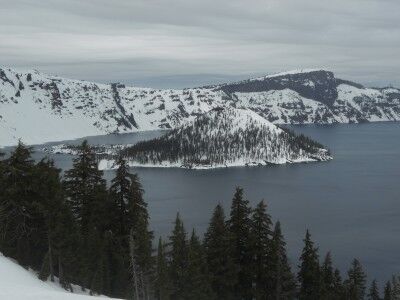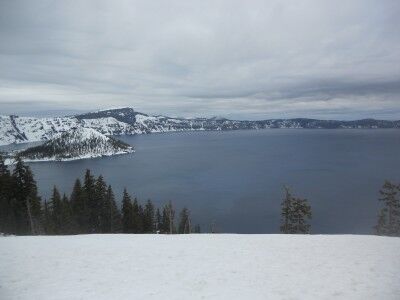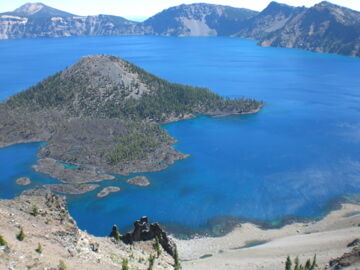Pumice Castle is one of the most colorful (a golden orange-brown in a sea of grays) features at Crater Lake National Park, but it’s often missed because it’s located at an unmarked turnoff along East Rim Drive (the pullout is 1.1 miles west of Cloudcap Overlook road junction and 2.4 miles east of Phantom Ship Overlook). It’s well worth paying attention and not passing this unique feature within the Crater Lake caldera. The orange-brown pumice rock has emerged in the shape of a castle as the rock around it has eroded away:
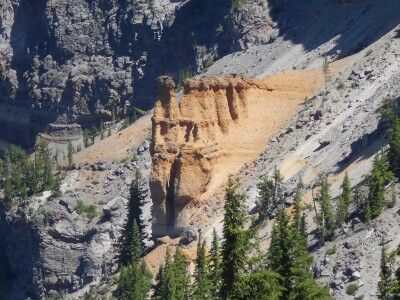
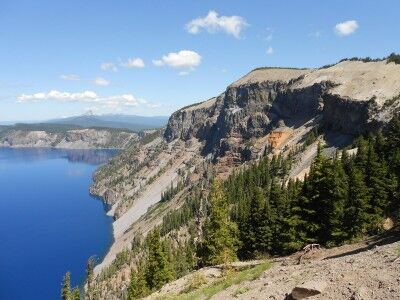
This is what the information sign at the turnout has to say about Pumice Castle:
Mount Mazama, the great volcano that preceded Crater Lake, was built up by successive eruptions of lava over many thousands of years. Some lavas oozed or poured from the volcano’s top or sides. Some erupted as red-hot rocks that flooded down the slopes. Others exploded into the air and fell as cinders or globs.
You can see the variety of Mt. Mazama’s lavas on the steep caldera wall. Pumice Castle, with its pinkish-brown “turrets,” is the most eye-catching feature. It’s made of layers of pumice and other rocks coughed up by Mt. Mazama – some so hot they welded welded together. These air fall deposits were buried and compacted by other lavas, then exposed when Mt. Mazama collapsed. A firm foundation of andesite lava has kept Pumice Castle intact, while surrounding pumice deposits have eroded away.
Mt. Mazama is classified as a composite volcano, a cone built up by lava flows interspersed with air fall deposits. Pumice Castle is made of air fall pumice that was laid down while Mt. Mazama was still growing.

